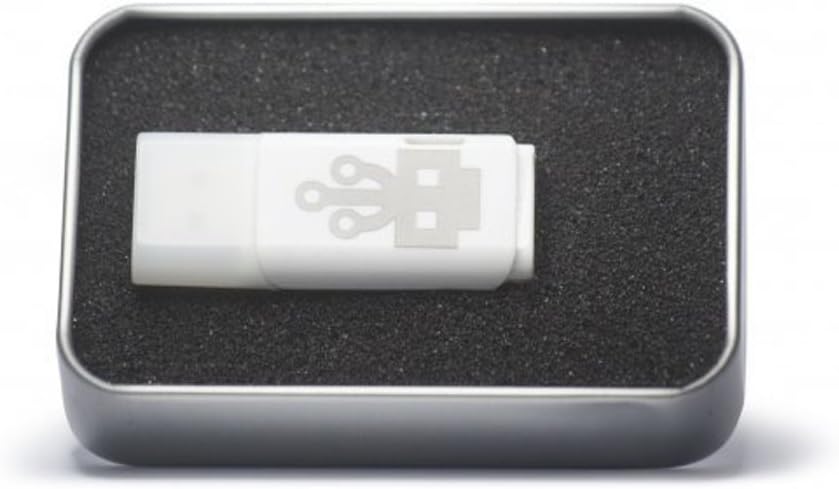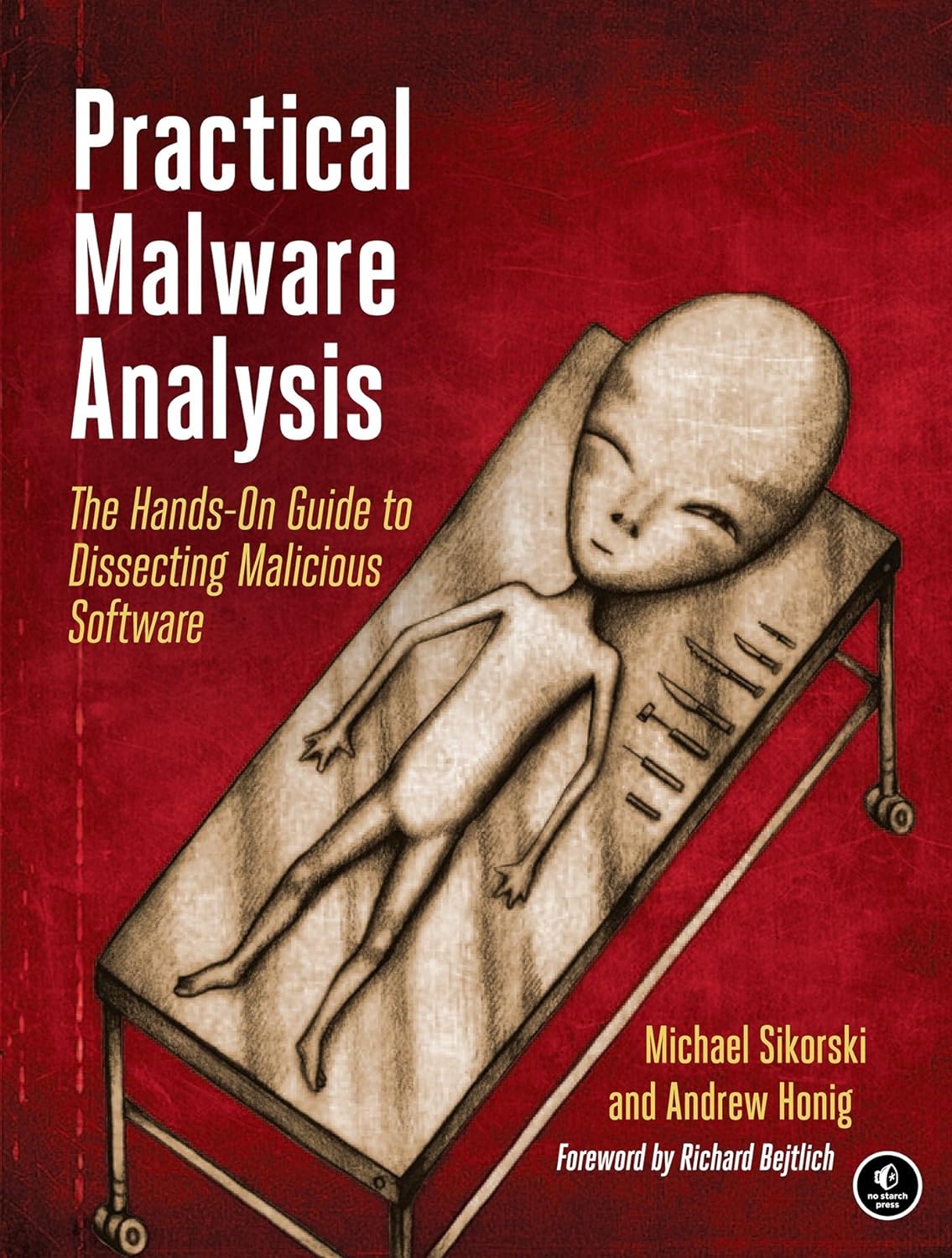Decrypting the Lingo: Understanding Bug Bounty Culture and Jargon
Dive into the Unique Terminology and Traditions of Bug Bounty Hunting

Decoding the Language of Cyber Sleuths
Welcome to the eclectic and intriguing world of bug bounty hunting, where each term and phrase unlocks a deeper understanding of this specialized field. This realm, thriving at the intersection of technology and cybersecurity, has developed its own vibrant lexicon. From technical jargon and acronyms to unique cultural references, the language of bug bounty hunters is as dynamic and diverse as the community itself. Whether you’re a beginner taking your first steps into this world or a seasoned hunter looking to deepen your cultural connection, this guide serves as your Rosetta Stone to decode the distinctive terminology of bug bounty hunting. Let’s embark on a linguistic journey, unraveling the phrases and idioms that define and enrich this exciting field.
Bug Bounty Hunter – The Cyber Sleuths of the Digital World
Understanding the Role: A bug bounty hunter, often likened to a digital detective, is essentially a cybersecurity adventurer. These individuals are the unsung heroes of the internet, diving deep into software and applications to sniff out bugs and vulnerabilities. Their mission? To uncover those hidden glitches that could potentially lead to security breaches.
Jargon Decoded: Think of bug bounty hunters as the Sherlock Holmes of the digital age. Just like Holmes cracks perplexing cases, these tech detectives unravel complex code to identify weaknesses. They’re not just tech geeks; they are the guardians of cyberspace, ensuring the digital safety of companies and users alike.
Real Talk: Picture this: It’s 2 AM, and a bug bounty hunter is glued to their screen, fingers dancing over the keyboard. They’re sifting through lines of code in a popular social media app. Suddenly, a eureka moment! They discover a loophole that could allow hackers to access private user data. They promptly report this to the app’s security team, bagging a handsome reward and, more importantly, a sense of pride in making the digital world a little safer.
Everyday Scenario: “Hey, guess what? I just started bug bounty hunting last month, and I’ve already found a small bug in a shopping app! They didn’t give me a cash reward, but I got a thank-you note and some cool swag. It’s pretty awesome being a part of keeping the internet safe!”
In the world of bug bounty hunting, it’s not just about the money. It’s about the thrill of the hunt, the satisfaction of solving a digital puzzle, and the pride in contributing to online security. These digital detectives might be behind the scenes, but their impact is huge, making the cyber world a safer place for everyone. 🕵️♂️💻🔍
Vulnerability – The Hidden Soft Spot in Software
Decoding the Term: In the intricate world of cybersecurity, a vulnerability is akin to a secret passage within a fortress. It’s an unintentional flaw or loophole in software that, if discovered by the wrong hands, can lead to a cyberattack. For bug bounty hunters, spotting these vulnerabilities is like finding hidden treasure; each discovery is both a triumph and a crucial step in fortifying digital defenses.
Jargon Simplified: Imagine your favorite video game has a hidden glitch that lets players jump levels. Now, replace the game with software, and the level jump with a potential security breach. That glitch is what cybersecurity experts call a ‘vulnerability’. It’s the chink in the software’s armor that can lead to digital mayhem if exploited by cybercriminals.
Real-World Scenario: You’re a bug bounty hunter, and you’ve just hit the jackpot – a vulnerability in a widely used photo-sharing app. It’s a tiny crack in the app’s coding, but big enough to let hackers sneak in and swipe personal data. You quickly gather evidence and report it to the app’s security team, preventing what could have been a data disaster.
Casual Conversation: “Did you hear about the latest bug I found in that new messaging app? It had a serious vulnerability that could’ve let hackers send messages from any user’s account! I reported it immediately, and they patched it up. It feels great to help fix these digital weaknesses.”
In the universe of software, vulnerabilities are the weak links that bug bounty hunters tirelessly seek to mend. Each discovered vulnerability is a potential crisis averted, a digital catastrophe prevented. For these cyber guardians, unearthing vulnerabilities is not just a skill – it’s a superhero power that keeps the digital world spinning safely. 🌐🔑🛡️
White Hat – The Cybersecurity Hero
Decoding the Term: In the grand chess game of cyberspace, the ‘White Hat’ hacker is the knight in shining armor. These are the ethical hackers, the virtuous warriors of the digital realm. Unlike their nefarious counterparts, white hats use their hacking prowess for the greater good, safeguarding systems and fortifying defenses.
Jargon Simplified: Think of a white hat hacker like a skilled magician who uses their tricks to entertain and educate, rather than deceive. They’re the tech geniuses who hack into systems, not for chaos and harm, but to find flaws and fix them before the baddies can exploit them.
Exploring the Shades of Hacking:
- White Hat Hackers: Picture these as the cyber guardians. They’re often hired by organizations to break into their own systems – ethically, of course – to find and repair vulnerabilities.
- Grey Hat Hackers: These are the enigmatic ones, dwelling in the murky middle. They might hack without malicious intent or permission, often revealing vulnerabilities to the public or the organization, all for the greater good.
- Black Hat Hackers: Here lie the villains of the cyber world. Black hats hack for personal or financial gain, without consent, often causing harm or chaos along the way.
Real-World Scenario: You’re at a cybersecurity conference, and a famous white hat hacker is demonstrating live on stage. They’ve just managed to breach a popular social media platform, not to cause harm, but to show how easy it could be for a black hat to wreak havoc. The crowd is in awe – it’s like watching a superhero in action, but instead of a cape, they wield a laptop.
Casual Conversation: “Did you see that article about the white hat who caught that massive security bug? It could’ve been a disaster if a black hat found it first. These white hats are like digital detectives, always a step ahead in the hacking game.”
In the fascinating world of cybersecurity, white hats are the unsung heroes. They navigate the same digital waters as black hats but choose to steer the ship toward safer shores. For every aspiring bug bounty hunter, wearing the white hat is a badge of honor, a commitment to using one’s powers for the forces of good in the digital universe. 🎩🛡️🌐
CVE – The Bug Hunter’s Encyclopedia
Decoding the Term: CVE, short for Common Vulnerabilities and Exposures, is like a grand library catalog in the cybersecurity world. It’s an extensive list where each known cybersecurity vulnerability gets its own unique identifier – a CVE number. This system helps in standardizing the way security flaws are addressed and discussed.
Jargon Simplified: Imagine CVE as a collector’s album, but instead of stamps or coins, it’s filled with vulnerabilities. Each time someone discovers a new bug, it’s like finding a rare stamp and getting it added to this global album with a unique CVE number.
Diving Into CVE World:
- CVE Number: This is like a digital fingerprint for a vulnerability. It’s a unique identifier that helps everyone talk about the same issue without confusion.
- CVE Records: Each record details the vulnerability, its potential impacts, and sometimes even ways to fix it.
Real-World Scenario: You’re a bug bounty hunter who’s just uncovered a serious flaw in a web application. You report it, and it’s so significant that it gets added to the CVE list. Now, your discovery has a CVE number, and cybersecurity professionals worldwide can reference it. It’s like having your name etched in the hall of fame of cybersecurity!
Casual Conversation: “Hey, did you hear about that new CVE reported last week? It’s a major one affecting thousands of websites. It’s amazing how the CVE system helps us keep track of these vulnerabilities, like a continuously updating encyclopedia of digital dangers.”
CVEs play a crucial role in the cybersecurity landscape. For bug bounty hunters, getting a vulnerability registered as a CVE is a moment of pride, a tangible acknowledgment of their contribution to making the digital world safer. It’s like being a historian, chronicling the battles fought and won in the ongoing war against cyber threats. 📚🌐🔐
Recon – The Bug Hunter’s Scouting Mission
Understanding Recon: Recon, a shorthand for ‘reconnaissance’, is the cyber equivalent of a scouting mission. In the world of bug bounty hunting, it’s all about gathering intel. Think of it like a detective surveying a scene before diving into the action – except here, the scene is a website or network, and the action is hunting for vulnerabilities.
Recon Explained:
- The Initial Lookout: It’s the first step in your bug hunting expedition where you scan the digital horizon, seeking potential weak spots in a target system.
- Gathering Tools: Just like a spy with binoculars, bug hunters use tools like Nmap for network scanning or OWASP Amass for mapping out the target’s web presence.
Scenario in Action: Imagine you’re gearing up to test the security of a new online shopping site. Your first move? Recon. You start by checking which server software they’re using, looking for outdated versions. You map out the site’s structure, noting any exposed directories. It’s like piecing together a puzzle before deciding where to place your next move.
In Casual Conversation: “Hey, I spent last night doing some serious recon on that new fintech platform. You won’t believe the number of subdomains I found! Looks like I’ve got a busy weekend ahead, sifting through all these potential entry points.”
For budding bug bounty hunters, recon is an essential skill – it’s about knowing your battlefield before you engage. It’s a blend of curiosity, patience, and strategic thinking. Like a master chess player, you’re surveying the board, planning your moves. So, grab your digital binoculars and start scouting – who knows what vulnerabilities you might spot! 🕵️♂️🌐🔍
Payload – The Hacker’s Secret Weapon
Decoding Payload: In the thrilling espionage of bug hunting, a payload is akin to a spy’s secret gadget. It’s not just any code; it’s a specially crafted script that’s like the master key to unlock a vulnerability’s potential. This little snippet of code is what transforms a theoretical weakness into a proven security risk.
Payload Explained:
- The Exploiter’s Toolkit: Think of payloads as tools in a burglar’s lock-picking set, each designed for a specific type of lock (or in our case, vulnerability).
- Custom Creations: The more skilled the hunter, the more refined and tailored their payloads. It’s about crafting that perfect key that fits into the digital lock just right.
Scenario in Action: Picture this: You’re facing a stubborn web application that seems secure. You suspect an XSS vulnerability but need to prove it. Enter your custom payload – a short string of script designed to pop up an alert box when executed. You inject it into the website’s search bar, hit enter, and voila! An alert box appears. Your payload has unlocked the vulnerability, revealing the flaw in the web app’s armor.
In Casual Conversation: “Last night was intense! I was up till 3 AM crafting this wicked payload for an XSS bug I found. When it finally worked, it felt like cracking a secret code. The rush was unreal!”
For the modern bug hunter, payloads are the essence of their craft. It’s about merging creativity with technical know-how, building something that’s both clever and effective. So, whether it’s a simple script that triggers an alert or a complex exploit that opens up a treasure trove of data, the right payload can make all the difference. Time to sharpen those coding skills and start crafting your digital keys! 🔐💻🚀
Responsible Disclosure – The Cyber Knight’s Code
The Ethical Dilemma Solved: Responsible disclosure is like being a modern-day Robin Hood of the cyber world, but without the stealing part. You find the digital ‘treasures’ (aka vulnerabilities), but instead of exploiting them for personal gain, you tip off the ‘owners’ (the companies) discreetly. It’s about being the hero who saves the day quietly.
Why It’s Cool:
- Cyber Ethics 101: Think of it as having a superpower but choosing to use it for good. You’re not just a bug hunter; you’re a guardian of the cyber realm!
- The Secret Messenger: There’s something intriguing about being the one who knows a secret and chooses to whisper it to the right ears instead of shouting it out.
Real-World Scenario: Imagine you’re exploring a popular e-commerce site and stumble upon a flaw that could expose user data. Instead of tweeting it out, you send a discreet message to their security team, like passing a secret note in class. You wait, they fix it, and voila – you’ve just saved potentially thousands from a data disaster, and all without any chaos!
Casual Bragging Rights: “Found a nasty bug on a site last night. Could’ve been chaos, but I went the responsible disclosure route. Felt like a secret agent sending coded messages to the security team. Pretty cool to be the behind-the-scenes hero, you know?”
In the bug bounty universe, responsible disclosure is the golden rule. It’s about balancing the thrill of the hunt with the ethics of the cyber world. By practicing responsible disclosure, you’re not just hunting bugs; you’re nurturing trust and respect in the digital community. It’s your secret superhero identity in the vast world of the internet. 🕵️♂️💻🛡️
Pwned – The Digital Victory Dance
The Cyber Triumph: The term ‘pwned‘ in the bug bounty universe is like hitting a home run in baseball. It’s the moment when a hunter outsmarts a system, finding a chink in the digital armor and gaining control. It’s not just about breaking through; it’s about skill, strategy, and a bit of swagger.
Why It’s a Big Deal:
- Cyber Street Cred: Saying you’ve ‘pwned’ something is like wearing a badge of honor. It’s proof that you’ve got the chops to outwit sophisticated defenses.
- A Eureka Moment: It’s the cybersecurity equivalent of finding buried treasure. You’ve cracked the code, and now you’re the captain of the digital ship.
Real-World Scenario: Imagine you’re trying to break into a virtual fortress (a.k.a. a heavily guarded server). You probe, you poke, and then, bingo! You find the hidden backdoor left ajar. You slide in undetected and take control. That moment of triumph? That’s getting ‘pwned.’ It’s like finding the secret passage in a video game that leads straight to the boss’s lair.
Casual Bragging Rights: “Had a real ‘pwned’ moment last night. Found a way into the server nobody had seen before. Felt like a cyber ninja finding a secret tunnel. Another day, another system outsmarted!”
In the dynamic world of bug bounty hunting, ‘pwned’ is more than just jargon. It represents the thrill of discovery and the satisfaction of a job well done. It’s a mix of intellect, ingenuity, and a little bit of cyber mischief. Every time you say ‘I pwned it,’ you’re not just announcing a victory; you’re celebrating the spirit of bug hunting. So, here’s to more ‘pwned’ moments – may your cyber journey be full of them! 🎮🏴☠️💥
Bug Bounty Platforms – The Digital Cupids of Cybersecurity
Cyber Matchmaking 101: Think of bug bounty platforms as the Tinder of the cybersecurity world. They’re the go-to spots where organizations seeking digital amour (a.k.a. security) swipe right to meet their perfect bug-hunting match. These platforms play Cupid, ensuring that vulnerabilities find their hunter soulmates.
Why They’re Buzzworthy:
- Diverse Opportunities: They’re like a buffet of bug bounty challenges. You get to pick and choose from a smorgasbord of vulnerabilities across different industries and technologies.
- Reward Central: They’re not just about finding bugs; they’re also about getting paid! Bug bounty platforms are where hunters collect their digital bounties, turning cybersecurity skills into cold, hard cash.
Top Bug Bounty Platforms:
- HackerOne: The big kahuna of bug bounty platforms. It’s like the cyber Colosseum, hosting epic battles against bugs.
- Bugcrowd: A bustling marketplace of bug bounty challenges, where hunters and companies mingle and match.
- Synack: This platform adds a twist with its invitation-only model, offering exclusive hunting grounds for the elite hunters.
- BugBustersUnited: More than just a platform, it’s a dynamic hub where knowledge meets collaboration. Here, bug bounty hunters at all levels come together to not only identify vulnerabilities but also to engage in a rich learning experience.
Real-World Scenario: Picture yourself scrolling through a bug bounty platform, akin to browsing Netflix for the next binge-worthy series. Suddenly, a wild challenge catches your eye. It’s a pesky bug in a popular app, and it’s just screaming for a fix. You dive in, armed with your skills and a steaming cup of coffee. Hours of hunting later, you nail it. You submit your report on the platform and wait for the sweet sound of success – the digital cha-ching of a bounty reward.
Casual Conversation Starter: “Just spent the weekend diving into BugBustersUnited – it’s like an adrenaline-fueled quest for knowledge and bugs. Discovered some awesome tool recommendations and insightful discussions. Can’t wait to apply these new strategies on my next hunt. Who knows, this might just be the breakthrough for my next big bounty!”
Bug bounty platforms are the playgrounds of the digital world, where the thrill of the hunt meets the joy of reward. They’re not just platforms; they’re communities, battlegrounds, and treasure troves rolled into one. So, whether you’re a novice hunter looking for your first bug or a seasoned pro seeking bigger game, these platforms are your gateway to glory. Happy hunting! 🕵️♂️💻🎯
Zero-Day – The Cybersecurity Unicorn
Decoding Zero-Day: Think of a zero-day vulnerability as the Holy Grail of bug hunting. It’s like stumbling upon an undiscovered planet in the vast universe of code. This rare find refers to a software flaw that’s unknown to the ones who should really be in the know – like the software developers and cybersecurity warriors. It’s unpatched, unfixed, and undetected, making it a golden ticket for both ethical hackers and the not-so-ethical ones.
Why Zero-Days Are A Big Deal:
- Ultra-Valuable: In the bug bounty bazaar, zero-days are like rare diamonds. They fetch top dollar and bragging rights.
- Power Play: Discovering a zero-day feels like unlocking a secret level in a game – it gives you access to systems in ways no one has thought of before.
Real-World Scenario: Imagine you’re dissecting a piece of popular software, and you hit upon a quirky behavior no one has documented before. You dig deeper, your curiosity piqued. Lo and behold, you’ve just unearthed a zero-day! It’s like finding a secret passage in a familiar building. You report it responsibly, and suddenly, you’re not just a bug hunter; you’re a cybersecurity superstar!
Casual Conversation Starter: “Did you hear about that zero-day I found last week? Felt like I discovered a new species in the wild. It’s now patched, and I’m on cloud nine!”
In the ecosystem of cybersecurity, zero-day vulnerabilities are the rare species that every hunter dreams of encountering. They symbolize uncharted territory, a challenge for the brightest minds. Finding one not only puts you in the cybersecurity hall of fame but also significantly boosts the digital defense of software used by millions. So, keep your eyes peeled, your minds sharp, and who knows? The next zero-day discovery might just have your name on it. 🌟💻🔐
Decoding the Bug Bounty Universe
As we wrap up our linguistic odyssey through the bug bounty universe, it’s clear that understanding the jargon is just the tip of the iceberg. It’s a gateway to a much richer, more vibrant world. It’s about embracing a community where every term opens doors to new knowledge, strategies, and camaraderie.
Bug bounty hunting is more than a technical challenge; it’s a culture, a shared language that bonds individuals across the globe. Whether discussing the latest “zero-day” find or swapping stories about “pwned” systems, the language is what binds the community together.
Join us at BugBustersUnited, a thriving hub where this language comes to life. It’s a place where you can share your victories, learn from defeats, and expand your bug-hunting vocabulary. Engage in lively discussions, share your unique experiences, and perhaps coin a new term or two!
Remember, every acronym learned, every phrase deciphered, is a step towards becoming not just a bug hunter, but a part of a global fraternity and sorority. A fraternity and sorority that’s constantly evolving, just like the threats we face. So, dive in, start speaking the lingo, and become an integral part of the bug bounty narrative.
After all, in the dynamic world of cybersecurity, words are your weapons, and knowledge is your shield. Keep learning, keep sharing, and let’s continue to make the digital realm a safer place, one bug at a time. Welcome to the tribe! 🌐🔍🤝






